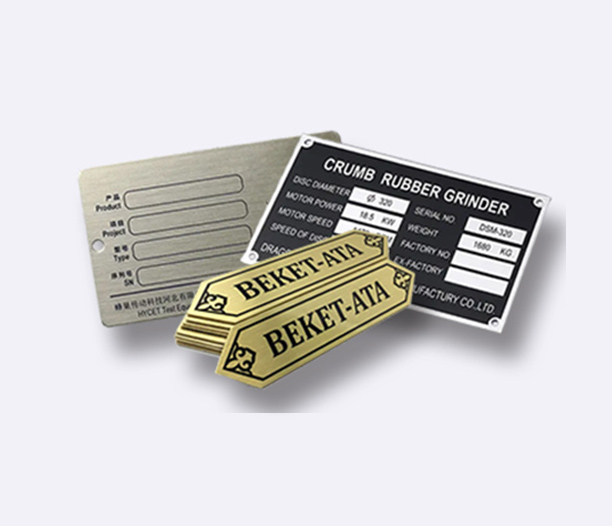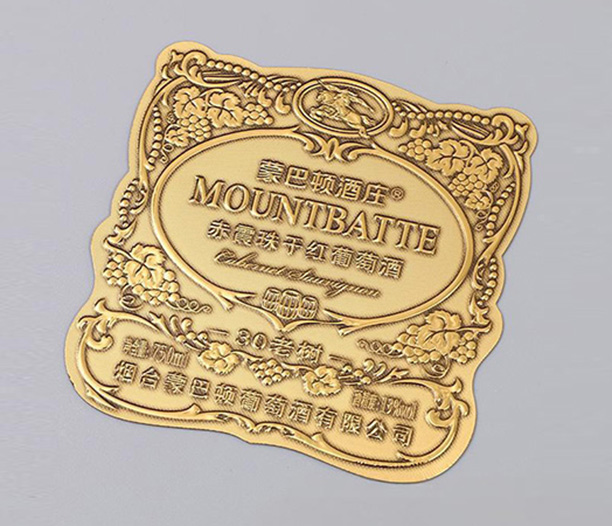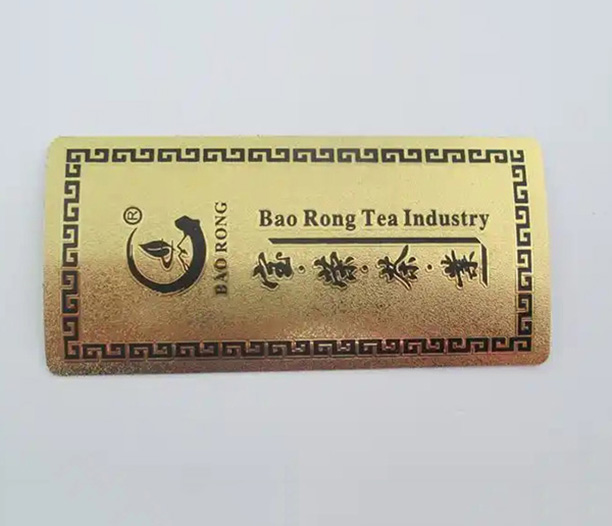Let’s cut to the chase: If you’ve ever snapped a plastic tag in half, watched a paper label disintegrate in the rain, or cursed at a rusted steel plate, you’ll love Zinc Alloy Identification Tags. These little workhorses stick around through storms, chemical spills, forklift collisions, and decades of daily abuse. But why? What’s their secret sauce? Buckle up—we’re diving into the science, real-world street cred, and “oh, that’s genius” details that make Zinc Alloy ID Tags the MVP of durability.

1. The Metal Mix: Why Zinc Alloy is Basically the Superhero of Metals
Zinc Alloy Identification Tags aren’t made from pure zinc—they’re a slick combo of zinc, aluminum, magnesium, and sometimes copper. Think of it like a metal Avengers team:
- Zinc (90–95%): Brings corrosion resistance to the party.
- Aluminum (4–8%): Adds strength and stops the alloy from getting brittle.
- Magnesium (0.1–0.3%): Improves fluidity during casting (so details stay crisp).
Here’s the kicker: This blend creates a material that’s lighter than steel but tougher than plastic. It’s like the Goldilocks of metals—just right for harsh environments.
Real-World Example: U.S. Navy submarines use Zinc Alloy ID Tags because they laugh at saltwater. Try that with regular steel.
2. Corrosion Resistance: The “Why Don’t You Rust?!” Hack
Ever seen a rusty Zinc Alloy Identification Tag? Nope. Here’s why:
- Self-Healing Superpower: When scratched, zinc reacts with oxygen to form zinc oxide—a protective layer that patches itself.
- Galvanic Protection: Zinc sacrifices itself to protect other metals (like iron) in contact with it. Translation: Your tag takes the hit so your gear doesn’t.
But wait—how does this play out in real life?
- Salt Spray Tests: Zinc Alloy Tags last 500+ hours without corroding (plastic tags tap out at 50).
- Acid Exposure: Spill battery acid? The tags might get a little ugly, but the text stays readable.
Pro Tip: For extra protection, go for electroplated Zinc Alloy ID Tags with a chrome or nickel finish.
3. Crush-Proof, Bend-Proof, and Forklift-Proof (Mostly)
Zinc Alloy Identification Tags don’t just sit there looking pretty—they survive hits that’d turn other tags into scrap.
The Physics Behind It:
- High Tensile Strength: 280–350 MPa (compared to aluminum’s 90–120 MPa).
- Impact Resistance: Absorbs shocks without cracking, thanks to that aluminum-magnesium kicker.
Real-Life Torture Tests:
- Forklift Impact: A 2,000-lb pallet rammed into a tag? It’ll dent but won’t snap.
- Freeze-Thaw Cycles: -40°F to 150°F? No warping, no problem.
Story Time: A Midwest auto plant switched to Zinc Alloy ID Tags after aluminum tags kept bending on engine blocks. Result? Zero replacements in 3 years.
4. Laser Engraving: The “Readable Forever” Trick
Ever tried reading a faded sticker after a year outdoors? Zinc Alloy Identification Tags skip that drama.
Why Laser Engraving Rocks:
- Burns, Not Inks: Lasers etch directly into the metal, so there’s nothing to peel or fade.
- Precision: Tiny barcodes, 2D Data Matrix codes—you name it, it stays sharp.
Durability Stats:
- UV Exposure: No fading after 10+ years in direct sunlight.
- Abrasion Test: Scrub with steel wool? The engraving laughs at you.
Pro Move: Combine laser engraving with black oxide coating for insane contrast.

5. The Coating Game: Extra Armor for Extreme Jobs
Bare Zinc Alloy ID Tags are tough—but add these coatings, and they become nearly indestructible:
Powder Coating
- What It Does: Adds a thick, color-coded layer that resists chips and chemicals.
- Best For: Outdoor gear, construction equipment, or tags that need to pop visually.
Epoxy Resin
- What It Does: Seals engravings from moisture and acid spills.
- Best For: Chemical plants, labs, or marine environments.
Anodizing
- What It Does: Electrochemically hardens the surface (up to 60% tougher).
- Best For: High-traffic areas where tags get bumped daily.
Case Study: A Texas oil refinery uses epoxy-coated Zinc Alloy Identification Tags on pipelines. After 5 years in acidic air, they still look new.
6. Zinc Alloy vs. the Competition: Why It Wins Every Time
Let’s settle the debate:
| Material | Durability Win | Durability Fail |
|---|
| Stainless Steel | Stronger under extreme loads | Prone to rust in salty air |
| Aluminum | Lighter weight | Dents easily, engraving fades faster |
| Plastic | Cheap for indoor use | Cracks in cold, melts near heat |
| Brass | Fancy look for decorative tags | Tarnishes quickly, needs polishing |
Zinc Alloy’s Sweet Spot: Balances strength, weight, and corrosion resistance without the high cost of stainless steel.
7. The One Weakness (Yeah, Nothing’s Perfect)
Even Zinc Alloy Identification Tags have a kryptonite: constant exposure to strong acids or bases (like pH <3 or >11). But let’s be real—how often is your gear swimming in hydrochloric acid?
Fix It: Use epoxy-coated tags in chemical zones, and you’re golden.
So, Why Should You Care?
Zinc Alloy Identification Tags aren’t just durable—they’re profit savers. Think:
- Slashing replacement costs by 70%+ compared to plastic or aluminum.
- Avoiding OSHA fines for illegible safety labels.
- Keeping production lines running because nobody’s scrambling to re-tag equipment.
Zinc Alloy Identification Tags: The Durability Deep Dive
At the end of the day, Zinc Alloy ID Tags earn their rep the hard way: by surviving the stuff that kills lesser tags. Whether it’s a hurricane, a factory floor, or a decade under the sun, they stick around doing their job. So next time you see one, give it a nod—it’s probably outlasting your smartphone.






